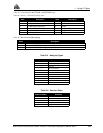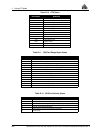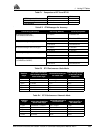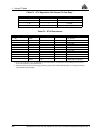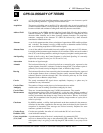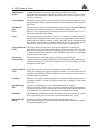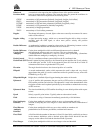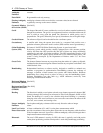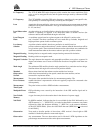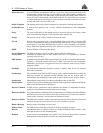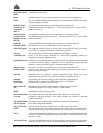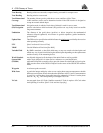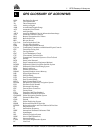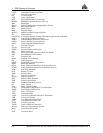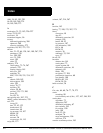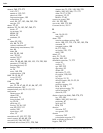
K GPS Glossary of Terms
MiLLennium GPSCard SW Version 4.503/4.52 Command Descriptions Manual Rev 2 271
L1 Frequency The 1575.42 MHz GPS carrier frequency which contains the course acquisition (C/A)
code, as well as encrypted P-code, and navigation messages used by commercial GPS
receivers.
L2 Frequency The 1227.60 MHz. secondary GPS carrier frequency, containing only encrypted P-code,
used primarily to calculate signal delays caused by the ionosphere.
Lane A particular discrete ambiguity value on one carrier phase range measurement or double
difference carrier phase observation. The type of measurement is not specified (L1, L2,
L1-L2, iono-free)
Local Observation An observation set, as described below, taken by the receiver on which the
Set software is operating as opposed to an observation taken at another receiver (the
reference station) and transmitted through a radio link.
Local Tangent A coordinate system based on a plane tangent to the ellipsoid’s surface at the
Plane user’s location. The three coordinates are east, north and up. Latitude, longitude and
height positions operate in this coordinate system.
Low-latency A position solution which is based on a prediction. A model (based on
Solution previous reference station observations) is used to estimate what the observations will be
at a given time epoch. These estimated reference station observations are combined with
actual measurements taken at the remote station to provide a position solution.
Magnetic Bearing Bearing relative to magnetic north; compass bearing corrected for deviation.
Magnetic Heading Heading relative to magnetic north.
Magnetic Variation The angle between the magnetic and geographic meridians at any place, expressed in
degrees and minutes east or west to indicate the direction of magnetic north from true
north.
Mask Angle The minimum GPS satellite elevation angle permitted by a particular receiver design.
Satellites below this angle will not be used in position solution.
Matched Observations from both the reference station and the local receiver
Observation which have been matched by time epoch, contain the same satellites, and are
Set Pair corrected for any known offsets.
Measurement The square of the standard deviation of a measurement quantity. The
Error Variance standard deviation is representative of the error typically expected in a measured value
of that quantity.
Measurement The point in time at which a GPSCard takes a measurement.
Time Epoch
Multipath Errors GPS positioning errors caused by the interaction of the GPS satellite signal and its
reflections.
Non-Volatile A type of memory device that retains data in the absence of a power supply.
Memory
Null Field By NMEA standard, indicates that data is not available for the field. Indicated by two
ASCII commas, i.e., ",," (HEX 2C2C), or, for the last data field in a sentence, one comma
followed by either the checksum delimiter "*" (HEX 2A) or the sentence delimiters
<CR><LF> (HEX 0D0A). [Note: the ASCII Null character (HEX 00) is not
to be used
for null fields.]
Obscuration Term used to describe periods of time when a GPS receiver’s line-of-sight to GPS
satellites is blocked by natural or man-made objects.
Observation Any measurement. The two observations used in NovAtel’s RTK algorithms are the
pseudorange measurement and the carrier phase measurement.



